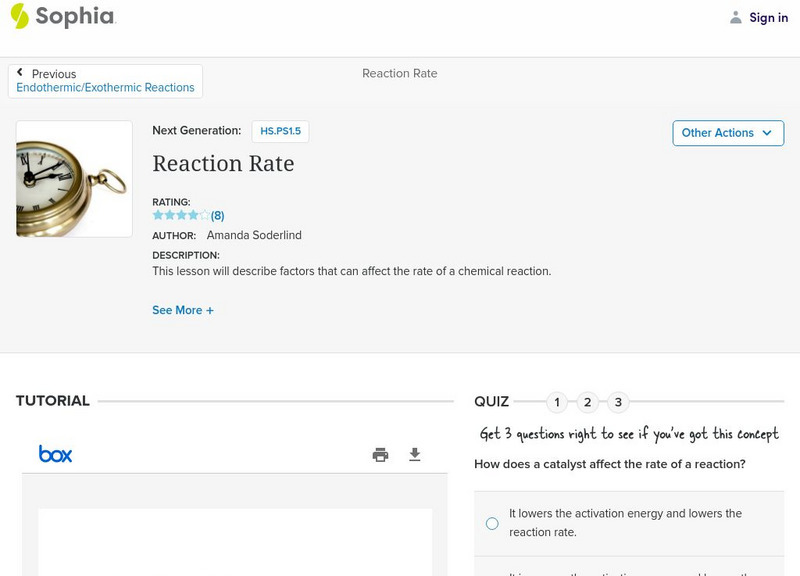Curated OER
Le Chatelier's Principle
In this chemical reaction activity, students apply Le Chatelier's Principle to explain how the given changes in reaction conditions will affect the position of equilibrium. This activity has 6 problems to solve.
Curated OER
Reaction Rates
In this chemical reactions worksheet, students explain why certain reactions take place slowly or quickly. Students calculate the rate of consumption for given reactions. This worksheet has 14 problems to solve.
Cold Spring Harbor Laboratory
Dna From the Beginning: Genes Can Be Turned on and Off
Two French scientists describe the research they did to figure out how bacteria turn certain genes on and off. The topic is a little involved, but the animations should help you understand the process.
Macmillan Education
W.h. Freeman Publishing: Allosteric Regulation of Enzyme
Reactions in cells must be regulated and one way to do this is using allosteric molecules. These regulators can activate enzymes or inhibit them. This tutorial explains exactly how allosteric regulation works using words, narration, and...
Sophia Learning
Sophia: Competitive and Noncompetitive Inhibition: Lesson 2
This lesson will introduce the two types of inhibition found in enzyme interactions: Competitive Inhibition and Noncompetitive Inhibition. It is 2 of 4 in the series titled "Competitive and Noncompetitive Inhibition."
Sophia Learning
Sophia: Competitive and Noncompetitive Inhibition: Lesson 4
This lesson will introduce the two types of inhibition found in enzyme interactions: Competitive Inhibition and Noncompetitive Inhibition. It is 4 of 4 in the series titled "Competitive and Noncompetitive Inhibition."
Sophia Learning
Sophia: Competitive and Noncompetitive Inhibition: Lesson 1
This lesson will introduce the two types of inhibition found in enzyme interactions: Competitive Inhibition and Noncompetitive Inhibition. It is 1 of 4 in the series titled "Competitive and Noncompetitive Inhibition."
Sophia Learning
Sophia: Reaction Rate
This lesson will describe factors that can affect the rate of a chemical reaction.









